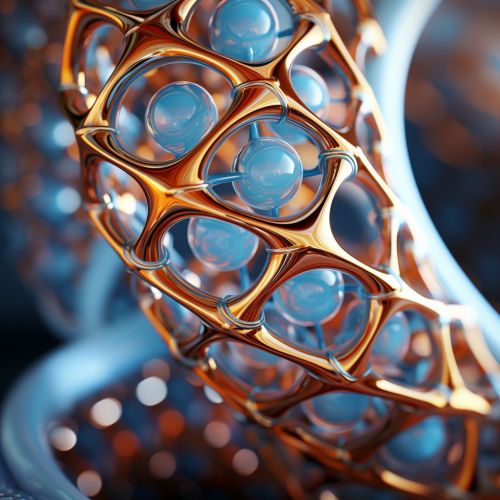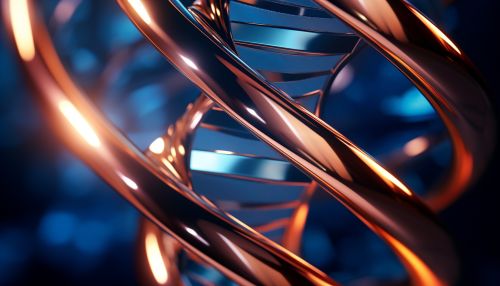Alpha helix
Introduction
The alpha helix is a common secondary structure observed in proteins. It was first discovered by Linus Pauling, Robert Corey, and Herman Branson in 1951. The alpha helix is a right-handed coiled or spiral conformation, in which every backbone N-H group donates a hydrogen bond to the backbone C=O group of the amino acid situated three or four residues further along the protein sequence.


Structure and Properties
The alpha helix structure is stabilized by hydrogen bonds, which are made between the carbonyl oxygen of one amino acid and the amide hydrogen of the fourth amino acid away in the sequence. This results in a tightly packed, stable structure. The alpha helix has 3.6 residues per turn and a pitch (the vertical distance between one turn of the helix to the next) of 5.4 Å, which is the product of 1.5 Å, the rise per residue, and 3.6 residues per turn.
The side chains of the amino acids in an alpha helix structure extend outward from the helix, where they are free to interact with the aqueous cellular environment, other side chains, or ligands. The alpha helix is a compact structure, but it has a large dipole moment with the positive end at the amino terminus due to the alignment of the peptide bond dipoles.
Alpha Helix in Proteins
Alpha helices are prevalent in proteins, making up about 20-30% of all amino acids in most proteins. They are especially common in enzymes where they provide a robust and versatile framework for the positioning of catalytic residues. They can be found in nearly all types of proteins and are key components in many types of protein motifs and domains. The alpha helix is also a fundamental element in protein-protein interactions, and the specific sequence of the amino acids within the alpha helix can greatly influence the specificity and strength of these interactions.
Factors Influencing Alpha Helix Formation
Several factors can influence whether a particular sequence of amino acids will form an alpha helix. These include the sequence of the amino acids themselves, the presence of other secondary structures nearby, and the physical and chemical conditions of the protein's environment. Certain amino acids, such as alanine and leucine, are particularly conducive to forming alpha helices, while others, such as proline and glycine, are less likely to be found in alpha helices due to their unique physical properties.
Alpha Helix in Disease
Mutations that disrupt the alpha helix structure of proteins can lead to diseases. For example, the sickle cell disease is caused by a single point mutation in the beta-globin chain of hemoglobin, changing a glutamic acid to a valine. This disrupts the normal alpha helix structure, causing the hemoglobin molecules to stick together and form fibers that distort the shape of the red blood cells.
